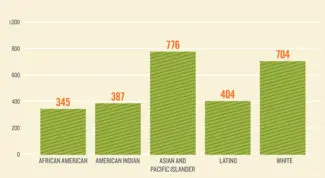“What could happen if the 18 million children of immigrants in the U.S. were given a path to opportunity?”
Recently, the Annie E. Casey Foundation released its 2017 report, Race for Results: Building a Path to Opportunity for All Children. The report looks at the intersection of children, opportunity, race and immigration and discusses the barriers to opportunity and well-being faced by children of color including children of immigrants. According to Nonet Sykes of the Casey Foundation, “The data makes it clear: for children of color, a person’s race is a leading barrier to success in the United States.”
First Focus joined child welfare advocates from a broad spectrum of organizations to hear a panel of experts discuss the importance of the Race for Results report and the importance of this as a national conversation in 2017. It is clear that race continues to divide politics and that racially diverse American children continue to fall behind across multiple indicators.
Download the full report here.
In the report, the Annie E. Casey foundation acknowledges that the history of the United States contains numerous examples of mistreatment of people of color, and through decisions made by national, state and local leaders these disparities in access to opportunity were born. According to the report, 43 percent of children in the U.S. live in low-income households with a disproportionate number being kids of color. The report also measured key aspects of child development such as birthweight, early childhood experiences, and education achievement across geographical regions of the United States and found that African-American, American Indian and Latino children face some of the biggest obstacles to opportunity.
Children of immigrants face additional barriers especially in light of the current political climate. It is estimated that 5 million children live in homes with at least one undocumented parent. These kids now live in fear of separation from their families on a daily basis. Additionally, children who came to the U.S. to seek refuge from violence in their home countries are now targets for deportation and fear being sent back to a life of horrific violence. This creates anxiety and toxic stress that adversely affects the mental health of these young people.
Within the context of this conversation it is not only important to understand that these children face barriers to healthy child development, but it is also important to understand that by not increasing their opportunities for education and competitive wage earnings, we are increasing the likelihood of future economic decline. According to the report, indicators for education and early work experiences help assess children’s preparedness to participate in civic and economic life.
Similarly, a recent report by PolicyLink, Bridging the Racial Generation Gap Is Key to America’s Economic Future, highlights the dramatic increase in the gap between the number of seniors of color and the number of young people of color. The report suggests an urgency in policy response to ensure that all low-income children of color and English language learners can access education and supports needed to succeed in the future.
“What could happen if the 18 million children of immigrants in the U.S. were given a path to opportunity?” This was a question posed by Patrick McCarthy, President and CEO of the Annie E. Casey Foundation. How different might our future look if we chose to embrace the strengths of all children regardless of race, ethnicity, or immigration status?
The strengths of our children are diverse and unique. We must work harder to implement policy solutions to reduce racial disparities and increase opportunities for children of color in the United States. They deserve a chance at a prosperous future and a chance to pursue happiness.
Download the full report here.